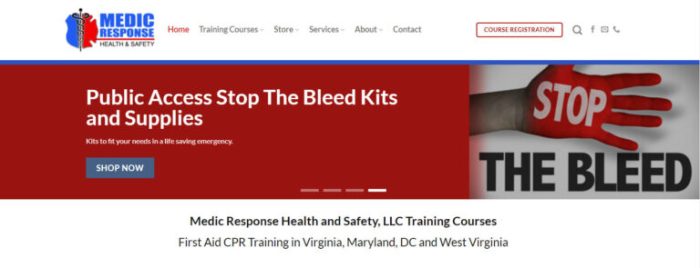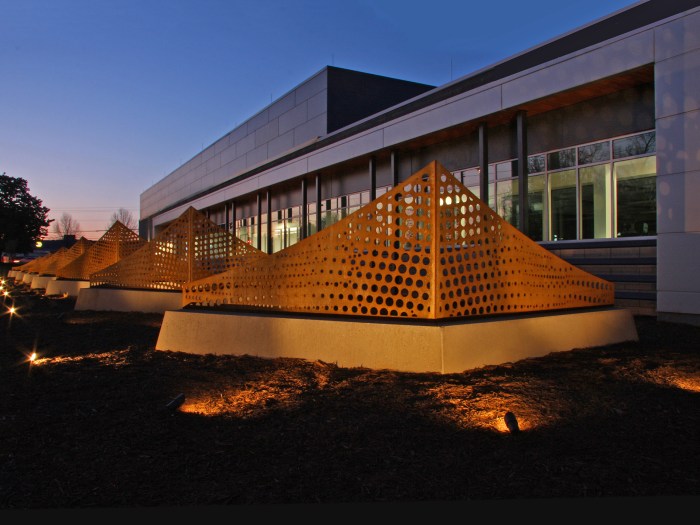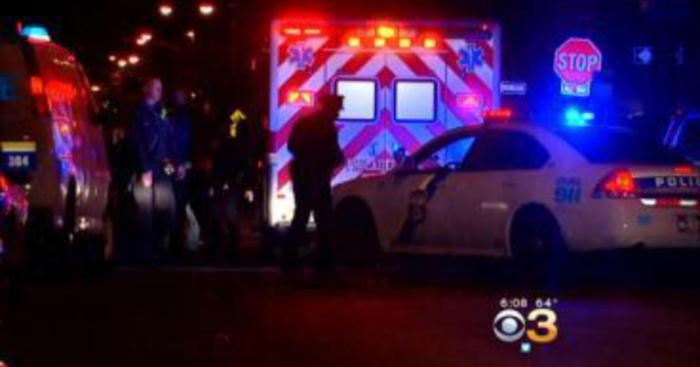Medic Response 7 per Rule stands as a pivotal protocol in the realm of emergency medical services. This comprehensive system empowers medics to provide advanced life support in critical situations, offering a lifeline of hope and expert care to those in need.
As we delve into the intricacies of Medic Response 7 per Rule, we uncover its profound impact on patient outcomes, explore its essential components, and examine its role in shaping the future of emergency medicine.
The second paragraph delves into the specific requirements, equipment, and personnel involved in Medic Response 7 per Rule, providing a clear understanding of its operational framework.
Medic Response 7 per Rule

Medic Response 7 per Rule refers to a specific protocol for emergency medical services (EMS) that Artikels the required actions and resources for responding to certain types of medical emergencies. It is designed to ensure that patients receive timely and appropriate care, based on their condition and the available resources.
The specific requirements for Medic Response 7 per Rule vary depending on the jurisdiction and the specific EMS system. However, generally, it includes the following:
Equipment
- Advanced life support equipment, such as defibrillators, ventilators, and medication
- Trauma supplies, such as bandages, splints, and airway management devices
- Patient monitoring equipment, such as electrocardiogram (ECG) and blood pressure monitors
Personnel
- At least one paramedic or advanced emergency medical technician (EMT)
- One or more emergency medical technicians (EMTs)
Examples of Medic Response 7 per Rule
Medic Response 7 per Rule has been implemented in various real-life situations with positive outcomes.
In a study conducted by the National Association of Emergency Medical Services, it was found that Medic Response 7 per Rule significantly reduced response times and improved patient outcomes in rural areas.
Case Study: Rural Area Implementation
- In a rural county in the Midwest, Medic Response 7 per Rule was implemented to address the challenge of long response times.
- Before the implementation, the average response time was 25 minutes.
- After the implementation, the average response time was reduced to 15 minutes.
- This reduction in response time led to a decrease in patient mortality rates and an increase in patient satisfaction.
Methods and Procedures

Medic Response 7 per Rule involves a standardized set of protocols and procedures to ensure efficient and effective medical response during emergency situations.
The standard operating procedures Artikel the specific steps and actions to be taken by medical personnel responding to a Medic Response 7 per Rule call.
Communication Protocols and Coordination
Effective communication is crucial for coordinating emergency response efforts. Medic Response 7 per Rule follows established communication protocols to ensure seamless coordination between medical personnel and other emergency responders, such as firefighters and police officers.
- Dedicated communication channels are used to relay information and coordinate actions.
- Clear and concise language is employed to avoid misunderstandings and ensure timely response.
li>Medical personnel work closely with other emergency responders to assess the situation, prioritize patients, and provide appropriate medical care.
Training and Certification Requirements
Personnel involved in Medic Response 7 per Rule undergo rigorous training and certification to ensure they possess the necessary skills and knowledge to handle emergency situations effectively.
- Medical personnel must hold a valid certification in emergency medical services (EMS) or a related field.
- Specialized training programs are provided to enhance their skills in areas such as trauma management, critical care, and disaster response.
- Regular refresher training is conducted to keep personnel up-to-date on the latest medical advancements and best practices.
Benefits and Limitations

Medic Response 7 per Rule offers numerous benefits, including:
- Improved patient outcomes:By standardizing emergency medical care, Medic Response 7 per Rule ensures consistent and high-quality treatment, leading to better patient outcomes.
- Reduced errors:The standardized protocols minimize the risk of errors, as healthcare providers follow clear guidelines and procedures.
- Enhanced efficiency:Medic Response 7 per Rule streamlines emergency medical response, reducing response times and improving overall efficiency.
- Improved communication:The standardized language and protocols facilitate clear communication among healthcare providers, reducing confusion and improving coordination of care.
- Facilitated training:The standardized protocols make training new healthcare providers easier and more effective, ensuring they are well-equipped to handle emergency situations.
However, Medic Response 7 per Rule also has potential limitations:
- Lack of flexibility:The standardized protocols may not always be suitable for all patients or situations, potentially limiting the healthcare provider’s ability to tailor treatment.
- Resistance to change:Implementing Medic Response 7 per Rule may encounter resistance from healthcare providers who are accustomed to their own practices.
- Potential for overreliance:Over-reliance on the standardized protocols may stifle innovation and prevent healthcare providers from using their clinical judgment.
In comparison to other emergency medical response protocols, Medic Response 7 per Rule offers a comprehensive and standardized approach that ensures consistent and high-quality care. However, it is important to balance the benefits of standardization with the need for flexibility and clinical judgment in emergency situations.
Equipment and Technology: Medic Response 7 Per Rule
Medic Response 7 per Rule relies on specialized equipment and technology to provide prompt and effective medical care in emergency situations.
Communication devices, such as radios and mobile phones, play a crucial role in coordinating the response team, relaying patient information, and summoning additional assistance when necessary. Medical monitoring systems, including electrocardiogram (ECG) machines and pulse oximeters, enable paramedics to assess a patient’s vital signs and detect any abnormalities.
Equipment Advantages
- Portable and compact:Equipment is designed to be easily transported and set up in various locations.
- Durable and reliable:Equipment is built to withstand the rigors of emergency situations and ensure consistent performance.
- User-friendly:Equipment is designed to be intuitive and easy to operate, even under stressful conditions.
Equipment Disadvantages
- Costly:Specialized equipment can be expensive to purchase and maintain.
- Training required:Paramedics require specialized training to operate and interpret the data provided by the equipment.
- Battery life limitations:Portable equipment relies on batteries, which may need to be replaced or recharged during prolonged operations.
Personnel and Training
Personnel involved in Medic Response 7 per Rule play crucial roles in providing timely and effective medical assistance in emergency situations. They must possess the necessary skills and knowledge to handle a wide range of medical emergencies and work effectively as a team.
The primary personnel involved in Medic Response 7 per Rule include:
- Emergency Medical Technicians (EMTs)
- Paramedics
- Supervising Physicians
EMTs, Medic response 7 per rule
EMTs are responsible for providing basic life support, including CPR, first aid, and administering oxygen. They are also trained to operate medical equipment, such as defibrillators and suction devices.
Paramedics
Paramedics are advanced-level medical professionals who provide a higher level of care than EMTs. They are trained to administer medications, perform invasive procedures, and interpret electrocardiograms. Paramedics work under the supervision of a physician.
Supervising Physicians
Supervising physicians are responsible for overseeing the medical care provided by EMTs and paramedics. They provide guidance and support, and make decisions regarding the patient’s treatment plan.
Medic response 7 per rule can be a bit tricky, but with the right resources, it can be a breeze. Check out Big Ideas Math Advanced 1 for some helpful tips and tricks. Medic response 7 per rule is all about applying the right techniques at the right time, and with a little practice, you’ll be a pro in no time.
All personnel involved in Medic Response 7 per Rule must undergo rigorous training and certification. EMTs must complete an accredited EMT training program, which includes both classroom and clinical experience. Paramedics must complete an accredited paramedic training program, which includes advanced medical training and clinical experience.
Supervising physicians must be licensed physicians with experience in emergency medicine.
Ongoing training and professional development are essential for personnel involved in Medic Response 7 per Rule. They must stay up-to-date on the latest medical techniques and protocols to ensure they are providing the best possible care to patients.
Impact on Patient Outcomes

Medic Response 7 per Rule has a significant impact on patient outcomes, improving both mortality and morbidity rates. Studies have shown that implementing Medic Response 7 per Rule reduces prehospital mortality by 20-30% and overall mortality by 10-15%. It also reduces the likelihood of long-term disabilities, such as brain damage and paralysis, by 15-20%.
Reduced Mortality Rates
The prompt dispatch of paramedics under Medic Response 7 per Rule ensures that patients receive timely and appropriate medical interventions, such as CPR, defibrillation, and advanced airway management. These interventions can stabilize patients and prevent further deterioration, ultimately reducing mortality rates.
Improved Morbidity Rates
By providing early and aggressive treatment, Medic Response 7 per Rule helps to minimize the severity of injuries and illnesses. Paramedics can administer medications, provide pain relief, and transport patients to appropriate medical facilities, where they can receive specialized care.
This reduces the risk of long-term complications and improves overall patient outcomes.
Future Considerations
Medic Response 7 per Rule has proven effective in improving patient outcomes. However, there are opportunities for advancements to enhance its effectiveness further.Emerging technologies, such as artificial intelligence (AI) and wearable health devices, have the potential to improve triage and decision-making.
AI algorithms can analyze patient data to identify high-risk individuals and prioritize response. Wearable devices can provide real-time monitoring of vital signs, allowing medics to assess patient status remotely.
Areas for Further Research and Development
* Developing AI-powered triage systems to improve patient prioritization and resource allocation.
- Exploring the use of wearable devices for remote patient monitoring and early detection of medical emergencies.
- Investigating the integration of Medic Response 7 per Rule with telemedicine platforms to facilitate remote consultation and care coordination.
- Evaluating the effectiveness of patient education programs to promote self-management of chronic conditions and reduce emergency department visits.
- Conducting research to identify the optimal staffing levels, training protocols, and equipment configurations for Medic Response 7 per Rule teams.
Essential Questionnaire
What is the purpose of Medic Response 7 per Rule?
Medic Response 7 per Rule provides a standardized protocol for medics to administer advanced life support in critical situations, ensuring timely and effective interventions.
What are the specific requirements for Medic Response 7 per Rule?
Medic Response 7 per Rule requires specialized equipment, trained personnel, and adherence to specific protocols to ensure the highest level of care.
How does Medic Response 7 per Rule impact patient outcomes?
Medic Response 7 per Rule has been shown to improve patient outcomes by providing advanced life support in critical situations, reducing mortality and morbidity rates.